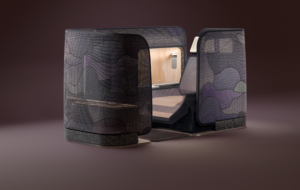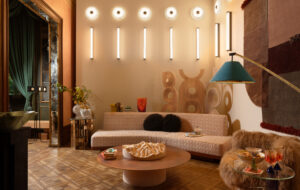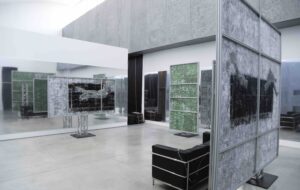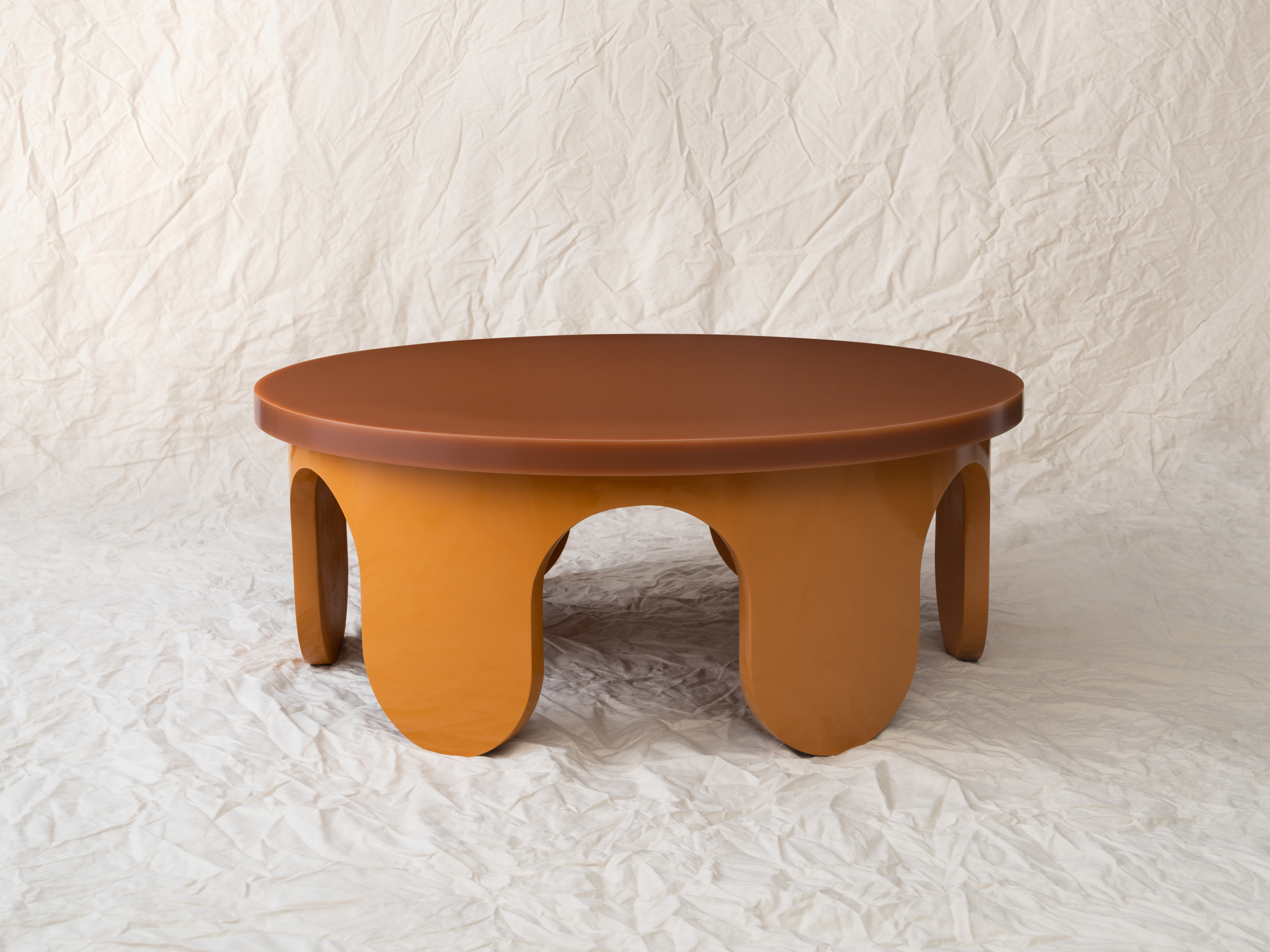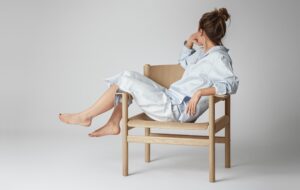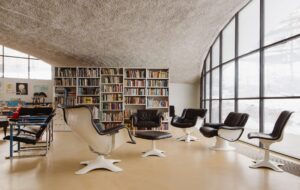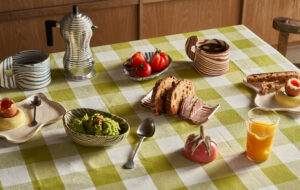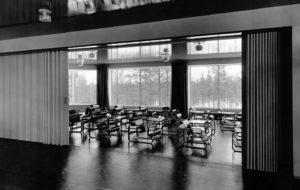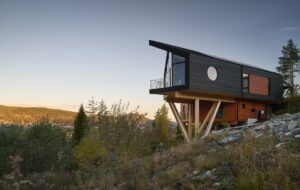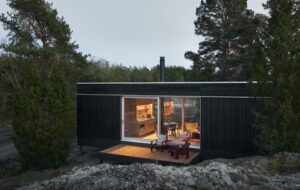


We’ve had a busy month. First, we trudged round London visiting 100% Design and all the rest. Then we headed for the design shows in Valencia and Tokyo. Below we try to sum up the mood of the cities’ design festivals…
The London Design Festival was supposed to be the greatest creative show on earth. It wasn’t.
This was the year London tried to out-Milan Milan. On top of established events such as 100% Design and designersblock, the week of September 22-28 saw two new events designed to establish London as the global capital of creativity, both the brainchild of John Sorrell. The portentously titled World Creative Forum was billed as the most prestigious design conference on the planet, while the London Design Festival was touted as a way of bringing all the multifarious events across the city together as one big whoopee.
Did it work? Not really. The World Creative Forum was widely described as over-priced and too corporate, and nobody seemed to notice the festival: “I didn’t realise there was a London Creative Festival going on,” said one visitor from New Zealand, whose confusion over the name of the event spoke volumes.
Walking around the city, you got no sense that anything special was happening. Jasjit Singh of India’s National Institute of Design said he found out about the festival and forum on the internet but was expecting more. “It didn’t feel like a festival,” he said. “If I hadn’t researched my trip before I came I wouldn’t have known what was going on.”
Despite the brash red “D” identity produced by Frost Design, there was no branding outside venues, no central focus where delegates could meet and each so-called partner event seemed determined to do its own thing. The result was a baffling array of events: 100% Design – the big trade show held at Earls Court – still produced its 100% Guaranteed guide to events around the city, but also launched a new architectural products event called 100% Detail. The Norwegians further confused things by holding their own national show in Hoxton called 100% Norway.
Not surprisingly, there were rumblings of resentment that the upstart festival had come along and attempted to coerce long-established events into coming under a common umbrella. The vast closing party at the Victoria & Albert Museum was the only moment when the whole of London came together in one event – and even that wassomewhat chaotic, with no branding, no focus, no speech and not even much light, so you couldn’t see who else was there. It was a good party, but it was not entirely clear what it was for.
There was a great deal of confusion about whether the festival and forum were aimed at the public or the industry, and there were criticisms of the festival’s website, press strategy and lack of a telephone helpline. “They have to improve next year, and I think they know that,” said one festival insider.
London proved rather too big for a Milan-style whirl. With events stretching from Earls Court in the west to Shoreditch in the east, many visitors complained that they spent most of the time travelling. “The problem is, everyone compares everything with Milan, and Milan is so much smaller,” said Ingken Wagner, managing director of Berlin design festival Internationales Design Zentrum. “London is so huge. How can you organise a festival there with an intimate feeling?”
The event that came in for most criticism was the World Creative Forum. At £1,250 plus VAT per ticket, only expense-account executives could afford to come and listen to the impressive array of speakers. That was deliberate: the organisers wanted the forum to be seen as the creative equivalent of the Davos economic forum. “The price was horrendous,” said Paul Blomfield, a delegate from New Zealand Trade & Enterprise in Aukland. He added: “I wish there’d been more of a purpose for the conference. Sometimes the conference seemed to be saying Ôeverything is creative’, which made it irrelevant. In future, it will need to get more substantial or will lose its audience.” There were also rumblings over the choice of venue: is the corporate Bloomberg building in the City the best location for discussion on something as esoteric as “creativity”?
Another event that came in for criticism was designersblock, held this year in the Tea Building, a half-completed office conversion in Shoreditch. Many felt the show included too many mediocre designers and it was damned hard work finding your way around the labyrinthine building, in which some designers were tucked away to the extent of hardly being visible. Construction continued around the show, creating dust and noise which some exhibitors found difficult. The opening-night party was a fiasco, with people queuing round the block, heavy-handed bouncers and a bar that ran out of drink far too early.
But it wasn’t all bad. Poke’s Room 10101 installation, which generated a show of internet images based on what people texted in, was great fun, and so was Claystation, where visitors could create stop-motion animations with Playdoh.
100% Design is still the core event of the week and most said it was better presented and more professional than in previous years. It attracted a record 35,878 visitors and its international profile is soaring, partly because of the buzz surrounding London. The show retains a good mixture of large firms and small local designers that international buyers appreciate. “What I like about London is despite the fact that it’s an international market, it feels very local – and I don’t mean that in a pejorative way,” says New York retailer Murray Moss. “Design here is practical, novel and the focus seems to be on whether it works well.”
“The thing that is amazing about 100% is that the designer-makers are next to the big firms,” says UK manufacturer Charles Keen. “In the last three 100% Design shows, the big boys have come in and done really strong, Milan-style stands. That is wonderful for London, but you wonder how it will affect the designer-makers.”
However, Wagner feels that the event has become too slick: “100% Design wasn’t so amazing – it was quite boring. The best things were the little events – designersblock and the little shows in shops around Brick Lane and Hoxton.”
One of the highlights of the smaller events was the Design UK Pick of 2003 show. Curated by Max Fraser, it was a great digest of the best in design over the last year, from both established and new designers and manufacturers. But while 1,200 people turned up for the closing party on the Saturday night, the quiet of the preceding days was indicative of how London as a whole received the design festival. Compared with the extensive media coverage given to London Fashion Week, very little was given to the design events.
But if the festival and forum were damp squibs, London’s reputation does not seem to have suffered. There is so much happening in the capital these days that foreign visitors still came away feeling satisfied. “In the last few years, the London scene has got so big that when you think about creativity, you think about London first and Milan second,” says Wagner. People assume that if you’re from London, you must be good.” Blomfield adds: “It was an amazing week. I went to everything I could and only seemed to see a third of it.” Was it worth the journey to London? “Yes – always.”
The Japanese capital doesn’t really have a design scene, but it certainly knows how to throw a good party.
In Tokyo, ugliness is skin deep. The world’s biggest urban conglomeration is so relentlessly hideous that the concrete and neon soon fade into the background like Muzak, allowing you to appreciate the exquisite beauty of the Japanese approach to consumption. This is not a city, but a vast mall where you can get anything, at any time of the day or night. Here, capitalism comes with a smile: in shops, your change is beautifully presented to you on a wooden plate by a beaming assistant and even the computerised machines on the subway feature a cartoon woman who bows and utters robot platitudes as your ticket shoots out.
The city has endured 15 years of recession, but you’d never know it. Shopping is a way of life here and Tokyo Designers Week (TDW), which takes place in early October each year, is more about retail therapy than creativity. There isn’t a Japanese design scene of any note: instead, this is an excuse for the myriad shops in the exclusive Aoyama district in the west of the city to dedicate floorspace to the work of (mostly northern European) designers. And for wealthy Tokyoites, designer furniture is just another thing to spend money on.
For the contemporary design industry, Japan is the only other market of any importance after Europe and America, so companies come here in force, partly to do business, but also for the chance to party – and shop. This is also an opportunity for Tokyo’s expatriate community to have a knees-up and for the various foreign embassies to flaunt their groovy credentials with exhibitions, cocktail parties and even club nights. Tokyo is an expensive place to visit, but the flag-waving and export opportunities are so strong (despite the recession, the Tokyo region’s economy is larger than the UK’s) that governments are keen to support their own design communities. The Swedes were here in force, hosting a parallel festival of Swedish design with 30 events and exhibitions dotted around the city. The Dutch, Danish, Finnish and Canadians were present in large numbers too, but there was a surprising absence of Italians (we were told that the Japanese don’t trust southern Europeans).
The UK had a rather half-hearted presence: the British Council flew out their Great Brits show – first held in Milan this year and featuring the work of Tord Boontje, Sam Buxton, Matthias Bengtsson and Daniel Brown – while the British Embassy mounted a low-key show called First Hand, featuring work by designers including Timorous Beasties and Ella Doran, which was bizarrely held on the sixth floor of a skyscraper in another part of town.
Yet, refreshingly, TDW doesn’t really feel like an industry event: after all, this is largely aimed at the consumer, and there is a genuine air of festivity on the Aoyama streets, with installations, booths and happenings dotted all over the place. On the Sunday night, the whole district becomes one vast party as each venue serves drinks to visitors.
Aoyama is perhaps the most pleasant district in the whole of Tokyo: the warren of low-rise, traffic-free streets is home to flagship fashion stores (including Herzog & de Meuron’s incredible new Prada building), plus dozens of boutiques, bars and restaurants. It’s a world away from the Blade Runner-esque chaos of better-known skyscraper districts such as Shinjuku and Shibuya.
Unlike the big European design fairs, Tokyo Designers Week doesn’t revolve around a trade show: there is no equivalent to Milan’s Fiera or London’s 100% Design. The city’s October design binge is widely known as Tokyo Designers Week, but there are two entirely separate events going on at the same time: Tokyo Designers Week and Tokyo Designers Block (TDB). TDW and TDB both issue separate printed guides to their events, which means that you have to refer to two directories as you wander round the city.
The shop-based events in Aoyama were, in fact, part of an upstart and rapidly growing TDB event launched three years ago. TDB is the brainchild of Teruo Kurosaki, president of Aoyama design shop Idée. Kurosaki got the idea following a visit to London’s designersblock five years ago; strangely, the London outfit allowed Kurosaki to use their trademark for his show. To make things doubly baffling, London designersblock has a presence at TDB, this year mounting a small show in a somewhat out-of-the-way space (all exhibitors are at the mercy of TDB, who allocate the venues).
The other event, TDW, a not-for-profit organisation, has been going for 18 years, often struggling against the city government’s indifference to holding events aimed at getting the public interested in design and helping to promote local designers. This year, TDW held three shows: Table Exhibition, The Way We Sit and Container City. The first was a self-explanatory show of tables by Japanese designers – many of them well-known at home but unheard of abroad – held in a covered piazza at the foot of a skyscraper in the Akasaka district. The second was a collection of chairs designed by students, and the third a series of installations inside shipping containers. The last two were both held in Odaiba, an artificial island in Tokyo Bay that was intended to be the city’s equivalent of London’s Docklands until the recession stopped work in its tracks.
Table Exhibition revealed the paucity of home-grown talent, resembling a graduate show by a lesser college back home: gratuitous form-making and poor construction were the order of the day. The Way We Sit was similarly uninspiring, featuring a gawky collection of shapes, mostly fashioned in wood. These two shows left the impression that contemporary Japanese design is largely derivative and lacks identity.
“Japanese people think that Western design is better; it’s a kind of cultural inferiority,” concedes TDW organiser Lina Kunimoto, who says that designers have not yet found a way of expressing the innate Japanese qualities of refinement, simplicity and craftsmanship in furniture. This is surprising, given that Japan leads the world in many fields. “There is a lot of good design in Japan, but it tends to be very corporate,” says Tom Dixon, a regular visitor to Tokyo who was in the city to deliver a seminar on UK design at the British Embassy. “The work going on in Sony, Nissan and Yamaha, for example, is truly world class, but the young designers you meet don’t seem to be getting much support.”
Independent Japanese designers are also held back by the insular nature of Japanese society, Kunimoto says. “They don’t know how to promote themselves abroad and there’s the language problem; very few people here are able to speak English properly.” Indeed, language is perhaps the only significant problem visitors to Tokyo face: if you’ve come to do business, an interpreter is essential.
Container City was a more interesting proposition: TDW filled a windswept vacant lot in Odaiba with around 80 shipping containers, which designers and companies – about half from Japan and half from abroad – have customised with largely conceptual installations. One of the highlights was by Tokyo collective Nendo, who are among Japan’s brightest young talents. Their Sinking About Furniture exhibit featured a range of standard items such as chairs, tables and shelves sinking into the floor of the container and revealing surprising new uses. Nendo is one of the few Japanese firms to have made an impact abroad, largely because of an astute marketing strategy, a commitment to showing at the big European fairs and, perhaps most importantly, a working knowledge of English.
“Manufacturers and makers in Japan don’t understand the importance of design,” said Nendo’s Akihiro Ito. “We are starting to collaborate with manufacturers here, but we also need to work outside Japan as the European market is so much bigger.”
Despite its obsession with all things Western, Japanese society is still surprisingly hermetic and extremely conservative – although that is changing fast, as a new generation of youngsters, frustrated by recession and inertia in their homeland, rejects the “salaryman” ethos which saw their parents devote their entire lives to one company, only to be discarded when the economic bubble burst in the Nineties. “It’s changing,” says TDW’s Kunimoto. “Nobody wants to be a salaryman now. Tokyo is loosening up a little bit.”
This year, for the first time, TDW received funding from the Tokyo government – a move entirely down to the city’s maverick new leader, Mayor Ishidora, who sees the value in promoting local designers. “He wants to promote Tokyo as a cultural centre,” says Kunimoto. “They’ve never done that before.” In a further sign of the new mood, the city has also relaxed restrictions that made mounting street performances almost impossible in previous years. As a result, the parties at this year’s events were some of the most exotic and lavish ever mounted at a design festival: fashion shows, transvestite galas and even a lesbian shower act were among the more memorable features of the Aoyama party circuit. This theatricality helps make Tokyo Designers Week about the most enjoyable design fair in the world. And it helps take your mind off the concrete.
www.tokyodesignersblock.com
www.tdwa.com
The city’s furniture fair is huge – but boring. A new breed of young designers is trying to change that.
Valencia is the sleeping giant of European furniture design. The Mediterranean city – the largest in Spain after Madrid and Barcelona – is home to one of the largest and most skilled manufacturing bases in Europe, with hundreds of family owned manufacturers dotted in and around the city. The Valencia region accounts for 24 per cent of Spain’s furniture output and 31 per cent of exports; Europe, the Americas and the Middle East are the main markets for local firms.
Yet the vast majority of these manufacturers churn out traditional or derivative products. This means that, unlike in design-conscious Barcelona further north, there aren’t many opportunities for local designers.
“They’re very conservative here,” says Ray Power, a young Irish designer from Dublin who moved to the city six years ago and admits he is finding it tough making a living. “Valencia has manufacturing, but it’s very traditional. About 90 per cent of the stuff at the Valencia furniture fair is classic and only about 10 per cent contemporary.”
Valencia’s annual furniture fair, the feria Internacional de Muebles (FIM), is the biggest in Europe after Milan and Cologne and is growing fast. This year it attracted 1,311 exhibitors (1,012 of them Spanish). Milan’s fiera is only slightly ahead, with 1,479 exhibitors this year (1,228 of them Italian). FIM’s organisers have stated that they want to challenge Milan’s dominance, but although Valencia’s visitor numbers grew three per cent this year to 88,201, it is still dwarfed by Milan which drew 171,520.
And Valencia continues to look to Milan to set the pace: “The manufacturers go to see all the new finishes in Milan in April and then bring them out here at the Valencia fair in September,” says Power.
However, with the Italian economy wobbling and with Milan’s key German market in recession, Valencia is in a good position to steal business. The city, like much of Spain, is enjoying a sustained economic boom yet is still able to undercut Italian manufacturers on price. Noel Hennessy, a London-based contemporary furniture retailer, says he is increasingly doing his buying in Valencia. “I come here for the quality – but mostly for the price,” he says.
Valencia, like many other cities in Europe, is fast waking up to the fact that design is good for the economy. Like many cities, it initially decided to instantly rebrand itself by commissioning “landmark” architecture in the manner of Bilbao: the third in the trio of preposterous structures by local-born architect Santiago Calatrava that make up the City of Arts & Sciences is nearing completion. And while these give the city something strikingly contemporary to put on its brochures and postcards, they are a sterile and incongruous addition to the cityscape.
But more recently, Valencia has adopted a bottom-up strategy to promote arts and culture in the city. This summer saw the second Bienal de Valencia, a festival of arts and architecture that is intended to give some content to the rash of new cultural buildings in the city. In terms of profile, the bienal is nowhere near arts festivals such as the Venice Biennale or Documenta Kassel, but it has a growing reputation. All of the work shown at the bienal is commissioned especially for the city, and this year included a major new installation by film-maker Mike Figgis, and site-specific works by the likes of Gilbert & George, Will Alsop and a host of Spanish artists.
The festival has not been without its critics, and a well-organised and vociferous campaign – calling itself the “anti-bienal” – has been waged, objecting to the money spent on the festival. However, as well as the benefits in terms of the city’s profile, the festival could result in a flood of new buildings for the city. The Soci—polis exhibition showed work by stars such as Toyo Ito, MVRDV and Foreign Office Architects, which could contribute to an area of town quite the opposite to the showpiece architecture of Calatrava’s City of Arts & Sciences.
Last year, the city authorities established a satellite show at the furniture fair called Nude (Nuevos Dise–adores – New Designers) which showcased the work of young designers. The plan is to forge links between designers and the hundreds of local manufacturers. At this year’s fair, the Nude show was by far the most interesting section. “The idea is we’ll be able to meet forward-looking manufacturers, and that relations between designers and factories will improve,” says Power, who has already teamed up with local lighting company Luzifer, which is manufacturing a couple of his lights.
Nude reflects the fact that Valencia – which is very much a working city, with its roots in agriculture and shipping – has a small but burgeoning design scene. The gritty, narrow streets of the Barri Carme quarter that fan out from the cathedral in the heart of the old city now host a growing number of boutiques featuring the work of local designers and bars and nightclubs of increasingly experimental design.
“There’s a lot of young people doing stuff now in Valencia,” says Power. “There are a lot of shops sprouting in the Barri Carme. It is starting to look like Soho.”
“There’s a generation of young designers now who are trying to establish themselves here rather than looking abroad,” agrees Herme Císcar.
The Valencian authorities select designers for the Nude show and allow them to exhibit for free in a special section at the entrance to the vast Feria de Valencia exhibition centre. The work on show expresses the limited means of the exhibitors: a lot of recycling, mostly small objects, but also displaying typically Spanish traits of flamboyance and colour combined with cosy domesticity. “What we’re trying to show is that we have ideas,” says Císcar. “It’s to show the local manufacturers what is possible. But it’s difficult – people won’t take risks. We’ve had a very good response and a lot of interest but in terms of business, the show has been terrible – we haven’t sold anything.”
Cutu Mazuelos of Stone Design got so fed up trying to get his Silicon Lamp (a lamp that the buyer assembles) manufactured locally that he took it to the UK. “We were talking to people in England and they were surprised because they assumed there was a big manufacturing base in Spain.” Instead, Mazuelos is now producing and marketing the product himself.
Several of the young designers exhibiting at Nude are from Madrid, drawn by the generous subsidies offered by the Valencian authorities. “Madrid isn’t a good city for these things,” says Mar San Juan of Madrid-based Elotrolado. “It has a very traditional mindset; there aren’t many young designers. But in Valencia there’s more, and the local government supports young designers.”
Marre Moerel, a Dutch designer based in Madrid, agrees. “All of Spain is super-traditional and nothing happens in Madrid. But from being in Valencia a few days, it seems there’s a lot happening here culturally.”
Valencia’s FIM is nothing like the Milan fair, however. There are few fringe events, and none of the frantic round of parties across the city that characterises the Italian event. Instead, evening functions tend to be rather stuffy formal dinners and cocktail receptions. In an effort to inject a bit of energy this year, Ana Pérez and Eva del Cotillo, who make up Valencia design team Kiitos, staged what they claim is the first-ever satellite event in the city, hiring a tiny bar beside the cathedral in the city centre and hosting an exhibition of young designers’ work. The opening party was attended by virtually all of the Nude crowd, who quickly finished off the limited supply of drinks and snacks. “It is a good start,” said del Cotillo. “Hopefully, next year there will be more events like this. We want to start something new in Valencia.”

